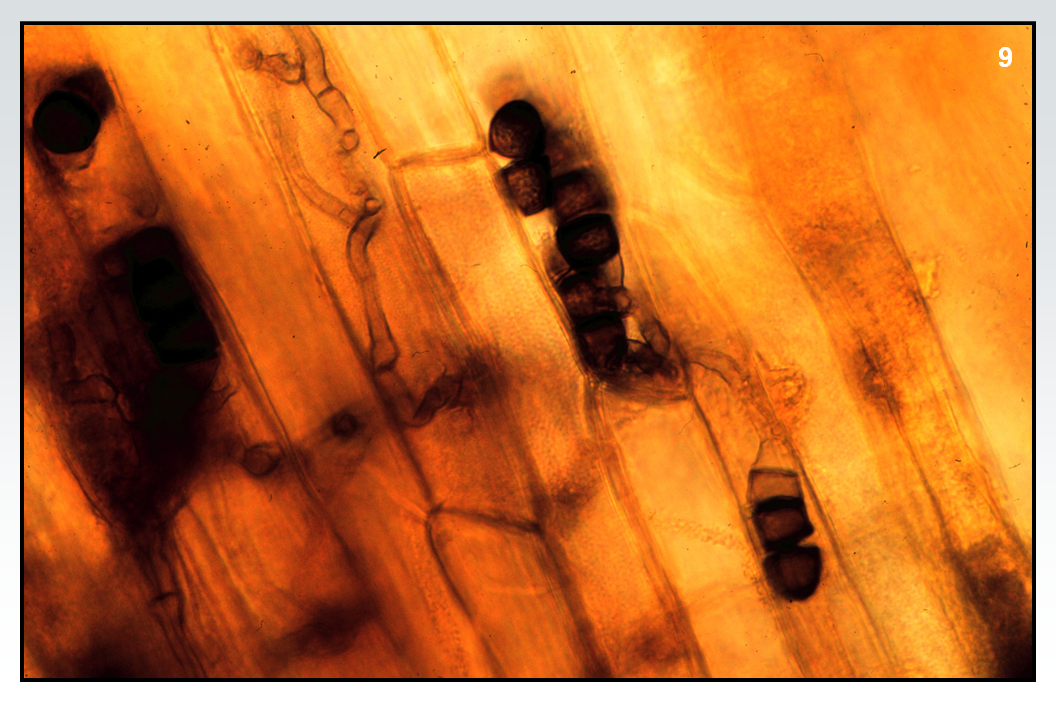 Plant Disease Diagnostics Clinic
Plant Disease Diagnostics Clinic

Play narration:
Characteristics of Fungi: Spores
While a lot of fungal spores are colorless, there are fungal spores that do have dark pigments, and these are typically produced by fungi that at least during part of their life cycle come into contact with adverse environments, particularly soil, where there are a lot of microorganisms that can potentially use the spores as a food source. These pigments are melanins, and these are actually anti-microbial agents, so they keep the spores from being parasitized by other microorganisms in the environment.
This particular spore is one of a fungus called Thielaviopsis. I affectionately call this the “Tootsie Roll” fungus, because this particular fungus has spores that look like Tootsie Rolls. They’re long. They’re brown. You’ll notice in that center spore, it’s divided up into individual cells. So, it’s multi-cellular, and those cells actually break off like the section of a Tootsie Roll. And, each one of those sections can potentially infect a plant. These particular spores are actually embedded in root tissue. That’s all of that kind of gold material that you see in the background. You can also see hyphae of this particular fungus growing through that root tissue as well.
This particular fungus, again called Thielaviopsis, is a root rot organism that we commonly see in greenhouse settings. It causes a disease called black root rot, and we typically it on greenhouse-grown plants like geraniums and petunias.